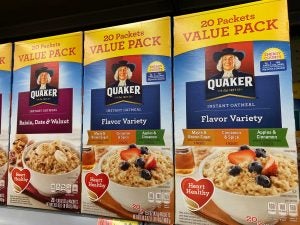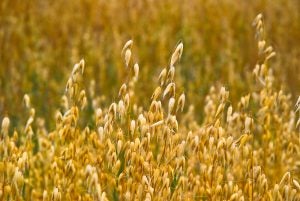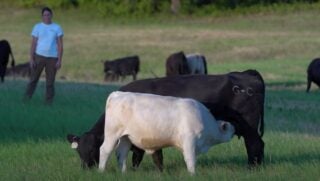What’s the list price for information?
In the cutthroat corporate world, tightly guarded trade secrets reign. Consider the Colonel’s original KFC recipe. Locked away in an unassuming vault at corporate HQ, only one person knows the combination. KFC also reportedly hires two companies to make halves of the recipe — where they’re expertly blended after the fact to make it finger lickin’ good.
Is that paranoia? Corporate brass would argue the sanctity of the franchise is at stake. Information is deliberately fragmented and issued on a very limited need to know basis.
Same goes for computer operating systems. Whether you’re a PC or Mac user, there’s proprietary code behind that fancy user interface. Don’t bother trying to address security holes yourself, Microsoft and Apple will (maybe) take care of it in-house.
Then a feisty upstart named Linux came to town. Developed by an IT wunderkind, the whole point was flexibility — allowing users to modify the nuts and bolts as they see fit — pretty much with legal impunity.
This was the dawn of the open source craze. Information for the masses.
In an era where information is the hot commodity, is this the future, or a flirtation destined to fail? Does the freebie model even translate to agriculture?
The Quaker Oat Man seems to think so.
Just recently, the full sequencing of the oat genome was announced. The results have been posted (in a genome browser) for all to use, no strings attached. This initiative was spurred by a multi-partner consortium of public and private entities.
Wait, private entities? That seems uncharacteristically noble.
PepsiCo (the parent of Quaker Oats) and Corteva AgriScience (formerly DowDuPont), partnered with UNC-Charlotte and the University of Saskatchewan to make it a reality.

What did everyone contribute? Corteva leveraged its sequencing technology and analytic capabilities, while UNC-Charlotte provided sequence data. The University of Saskatchewan provided the actual sequenced sample — now holding the distinction as the genomic Adam and Eve of oats (plants are generally intersexed, meaning they have male and female “equipment” on the same individual).
But if you’re a boardroom executive, why share when you can hoard (info)? Or at least restrict usage through non-disclosure agreements?
Besides the PR, there are some good reasons to collaborate. First, think sustainability. We constantly hear about the fragility of our food system and a need to increase resiliency — against the likes of the weather, pests, and diseases.
Though the information is (now) right in front of us, deciphering it is the challenge. The grand unveiling of the oat genome is the first step toward a more thorough understanding of genes and the traits that they code for. For our purposes, genes — the schema of life — are biological code using a limited alphabet of A’s, T’s, G’s, and C’s. These are then biologically decoded into useful traits. These traits can be agronomic (field-based), environmental, nutritional, or more culinary/taste oriented. Example of traits are drought tolerance and pest/disease resistance.
If we know exactly where to look for genes encoding useful traits — using the sequenced genome as a reference — then we can screen other oat varieties for their diversity. Maybe these other varieties have a ramped up version of a gene for drought tolerance or pest/disease resistance — ones that could be used in a breeding program. Or perhaps we could identify genes responsible for improved root growth, enhancing water uptake and carbon sequestration (locking up that climate-change-inducing CO2).
Even better, we can use what we know about the oat genome to find gene analogues (functional equivalents that basically do the same job) in other grain species and vice versa. The knowledge benefits just continue to compound!

Personally, I’d be interested in identifying symbiosis genes. These genes might code for a signaling compound (kind of like a bullhorn announcement) that the oat roots are interested in finding a soil microbe partner to tag team with. Both partners get something out of the deal. Maybe the plant gets a boost in growth while diverting some of its photosynthetic bounty to the companion.
On the nutrition side, we can target specific qualities like enhanced fiber content and essential nutrients. Speaking of nutrition — what makes oats naturally gluten free, while crop cousins like rye and wheat are loaded with it? This could provide some useful insights into the development of hypoallergenic grains.
And don’t forget the simple pleasures of taste. More flavorful varieties may be a direct outcome of this research.
While open source information is undoubtedly a net positive, the application can be a very different story. Nothing is stopping corporations from securing (read: plant variety protection — similar to a use patent) the fruits of their labors. While this may draw jeers, it’s the corporate model. Conversely, public institutions and non-profits would be free to use the information to develop license-free seeds. Doubly open source!
In a shared ecosystem of innovation, public/private partnerships are not only possible, but desirable. By spurring (not spurning) collaboration, the net trajectory of advancement trends ever upward. It’s a transcendent and long overdue model.
Tim Durham’s family operates Deer Run Farm — a truck (vegetable) farm on Long Island, New York. As a columnist and agvocate, he counters heated rhetoric with sensible facts. Tim has a degree in plant medicine and is an Associate Professor at Ferrum College in Virginia.



